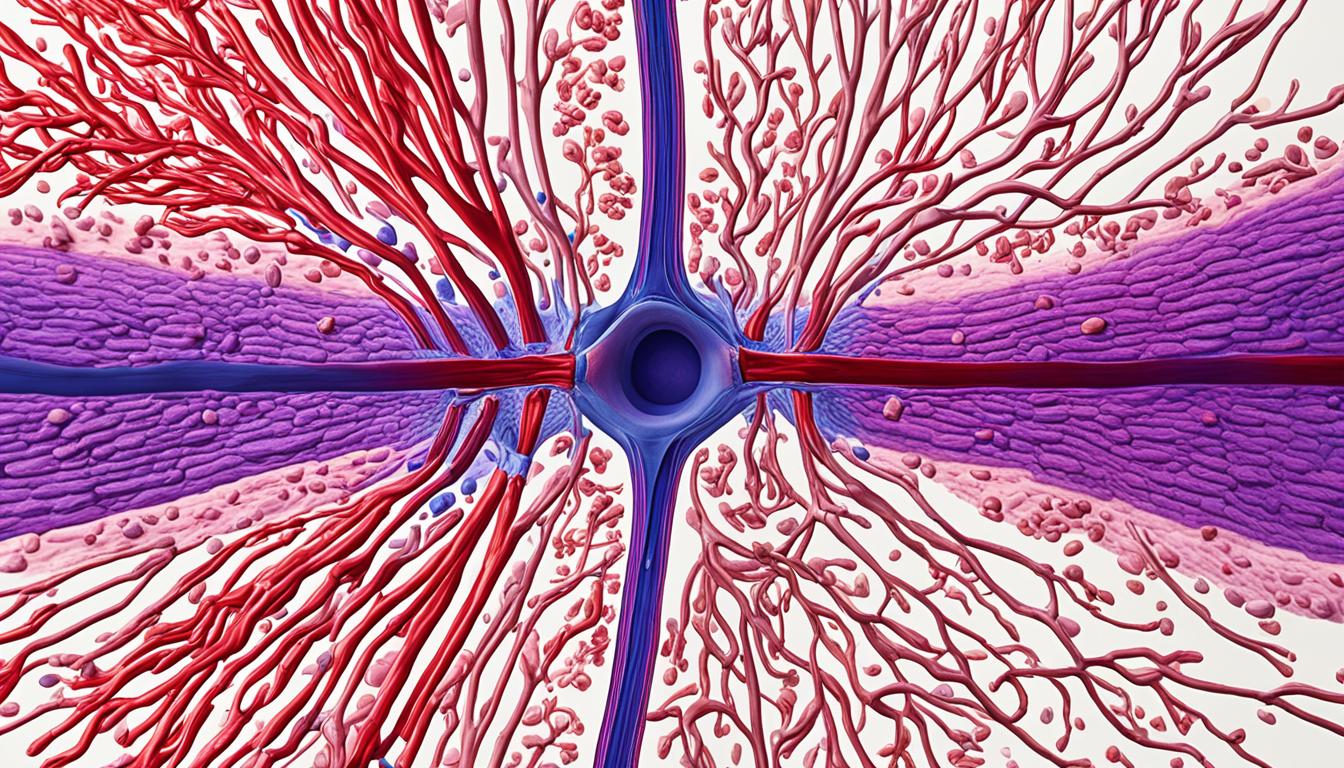Cardiovascular diseases are a top cause of death across the globe. They don’t affect every place the same. Heart problems claim more lives than cancer annually. In women, the risk of heart and artery issues is growing too. This makes them more deadly than breast cancer for women.
Arteriosclerosis, also known as atherosclerosis, is when arteries harden. It’s due to plaque build-up. This build-up narrows the arteries, limiting blood and oxygen flow to the heart. Such a condition can lead to heart issues like coronary artery disease and heart attacks.
Its symptoms can include chest pain and a lack of blood flow in the body. Blood clots can also form. Factors like high cholesterol, family history, not staying active, high blood pressure, smoking, and diabetes can contribute to this condition.
To diagnose heart disease, doctors run blood tests, echocardiograms, angiograms, and gene exams. Once diagnosed, treatments including medicines, surgeries, and even stem cell therapy are available. Stem cell treatment is a non-surgical option. It can help improve the heart’s function and blood flow, possibly reversing heart disease.
Key Takeaways:
- Cardiovascular diseases rank high in global death causes.
- Hardening of the arteries limits blood and oxygen to the heart.
- Symptoms include chest pain and a risk of blood clots.
- Causes involve high cholesterol, family background, and certain lifestyles.
- Diagnosis and treatments range from tests to surgery to stem cell therapy.
Causes and Symptoms of Atherosclerosis
Atherosclerosis is a heart issue that happens when plaque builds up in arteries. This plaque is made of cholesterol, calcium, fat, and other things. It grows over time, making the arteries narrow and hard. This can slow down the blood flow to the heart and cause serious heart problems.
Atherosclerosis shows many different symptoms, especially depending on which arteries are affected. The most well-known symptom is angina, which causes chest pain. People with this condition might also feel pain in their legs or arms, cramping, heart palpitations, and have trouble breathing. They might also feel tired and confused.
This issue is not just about the heart. It can increase the chances of having a stroke, heart rhythm problems, or peripheral artery disease. So, getting diagnosed and treated early is really important to manage atherosclerosis and avoid more problems.
Common Symptoms of Atherosclerosis:
- Chest pain/angina
- Leg or arm pain
- Cramping
- Heart palpitations
- Shortness of breath
- Fatigue
- Mental confusion
If any of these symptoms sound familiar, it’s crucial to see a doctor for a check-up.
References:
- “Atherosclerosis.” Mayo Clinic, Mayo Foundation for Medical Education and Research, 11 Dec. 2020, https://www.mayoclinic.org/diseases-conditions/atherosclerosis/symptoms-causes/syc-20350569.
- “Atherosclerosis.” American Heart Association, https://www.heart.org/en/health-topics/cholesterol/about-cholesterol/atherosclerosis.
Diagnosis and Treatment of Atherosclerosis
Doctors use a mix of exams and tests to diagnose atherosclerosis. This includes physical checks, blood tests, and special imaging. These steps show how severe the artery blockage is. Then, they can pick the best treatment for the patient.
Diagnosis of Heart Disease
Physical exams start the diagnosis. Doctors listen to the heart and look for odd sounds. They check the patient’s heart health overall and ask about past heart issues. This includes risk factors like high blood pressure, smoking, or diabetes.
Blood tests check cholesterol levels, which are key in atherosclerosis. High LDL cholesterol, or “bad” cholesterol, leads to artery plaque. Genetic tests can spot gene mutations linked to heart diseases. These tests give doctors more info for a personalized treatment plan.
Imaging tests are crucial in seeing inside the arteries. Ultrasounds track blood flow and find any blockages. Angiograms use a contrast dye and X-rays to see plaque in detail. Stress tests show the heart working hard, pointing out any issues with blood flow.
Treatment Options
Treating atherosclerosis often involves lifestyle tweaks, medicines, and sometimes surgery. The treatment is tailored to each patient’s health and risks.
Lifestyle changes form the core of treatment. A healthy diet and regular exercise are vital. They lower cholesterol, keep the heart healthy, and control weight and blood pressure.
Medications can help too. Statins lower cholesterol and slow atherosclerosis’s progress. Blood pressure drugs ease strain on the arteries. Aspirin might be used to stop blood clots.
If blockages are serious, surgery might be needed. Bypass surgery makes new paths for blood. Angioplasty opens narrow arteries with a balloon. Endarterectomy clears artery blockages to restore proper blood flow.
Stem cell therapy is a new approach showing promise in treating atherosclerosis. It uses stem cells to fix heart damage, enhancing heart function. This might be an option for those not helped by medications or with advanced heart disease.
| Diagnosis | Treatment |
|---|---|
| Physical exams | Lifestyle changes |
| Blood tests | Medications |
| Imaging tests (Ultrasounds, angiograms, stress tests) | Surgical procedures (Bypass surgery, angioplasty, endarterectomy) |
| Genetic panels | Stem cell therapy |
Conclusion
Hardening of the arteries, known as atherosclerosis, can cause heart problems like heart attacks. This issue comes from having too much cholesterol over a long time. Things like not exercising, high blood pressure, smoking, and diabetes make it more likely. Tests to check your heart and blood flow are key to finding the right treatment.
To fight atherosclerosis, changing your lifestyle is important. That means eating well and staying active. Your doctor might also give you medicines to lower your cholesterol or blood pressure. And in serious cases, you might need surgery to help the blood flow better.
Using stem cells to treat heart disease is a new and exciting area. It aims to fix heart damage and make new blood vessels. This method is not just for the early stages of the disease. It’s also for people who don’t get better with standard treatments. With more studies, we’re learning how helpful this approach can be.

